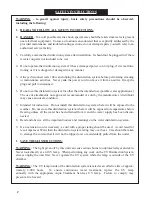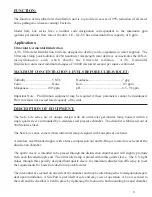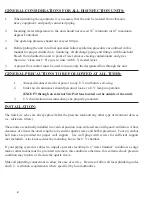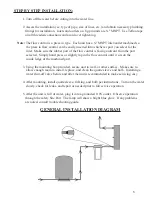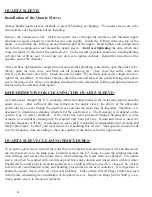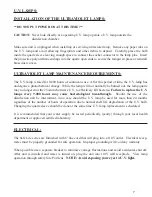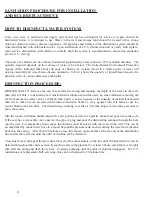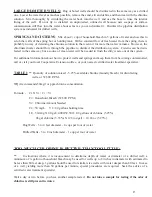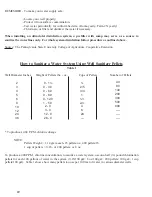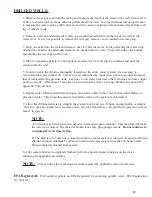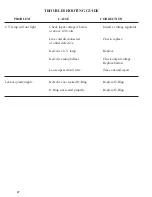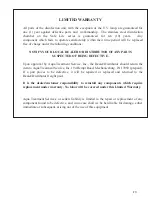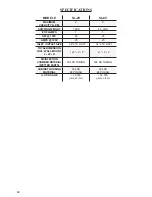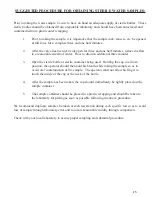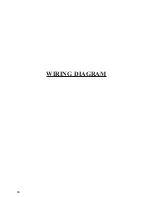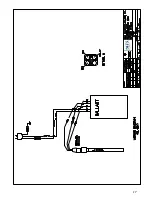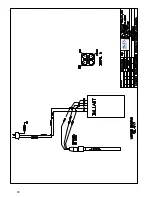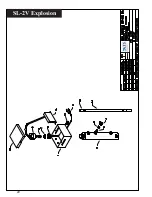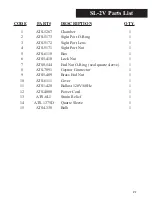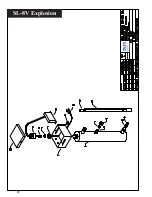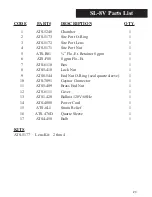
11
DRILLED WELLS:
1. Remove the cap or seal from the casing and measure the depth of the water in the well, then refer to
Table 1 to determine how many chlorine pellets should be used. In some instances removing the seal
to measure the water can be a difficult task, and it is easier to estimate well and water depth from well
log or other records.
2. Remove well cap and determine if there is an unobstructed path from the top of the well to the
water level. If it is not possible to remove the well cap, remove vent or sanitation access plug.
3. Drop one pellet into the well and listen to hear if it hits the water. If the pellet hits the water, drop
one-half the number of pellets determined to be needed into the well. These will sink to the bottom
and sanitize the lower part of the well.
4. Mix the remaining pellets in a few gallons of water in a CLEAN plastic container and pour the
solution into the well.
5. In order to mix the chlorine thoroughly throughout the entire water system, it is necessary to
recirculate the water in the well. This can be accomplished by connection a hose to an out side faucet
that is located after the pressure tank. Use hose to run water back down the well (this also rinses upper
portion of well). After about 15 minutes of recirculation the water, a strong chlorine odor should be
apparent. Turn off hose.
6. Bypass water softener and filters and open each water outlet in the water system until chlorine is
present in water. This procedure assures that all the water in the system is chlorinated.
7. Allow the chlorinated water to stand in the system for at least one (1) hour, and preferable overnight.
After this, open an outside faucet system until water runs chlorine free. Repeat flush operation on each
faucet in system.
NOTE:
A. Chlorine may break loose iron deposits, slime and organic material. This material will make
the water run colored. The material broken loose may plug pump screens.
Do not continue to
run pump if water doesn’t flow.
B. The high level of chlorine required to sanitize a water system is corrosive to most metals and
chlorine solution must
not
be allowed to remain in water system more than 36 hours before
being completely flushed from system.
8. After system has been completely flushed, perform a bacteriological analysis on the water
following all applicable procedures.
NOTE:
Always follow the sanitizing procedure required by applicable state or local laws.
EPA Registered:
Well sanitizer pellets are EPA Registered for sanitizing potable water. EPA Registration
No. 50510-1
Summary of Contents for Safe Lite SL-2V
Page 16: ...16 WIRING DIAGRAM...
Page 17: ...17...
Page 18: ...18...
Page 19: ...19 DRAWING AND PART NUMBERS...
Page 20: ...20 SL 2V Explosion...
Page 22: ...22 SL 8V Explosion...


